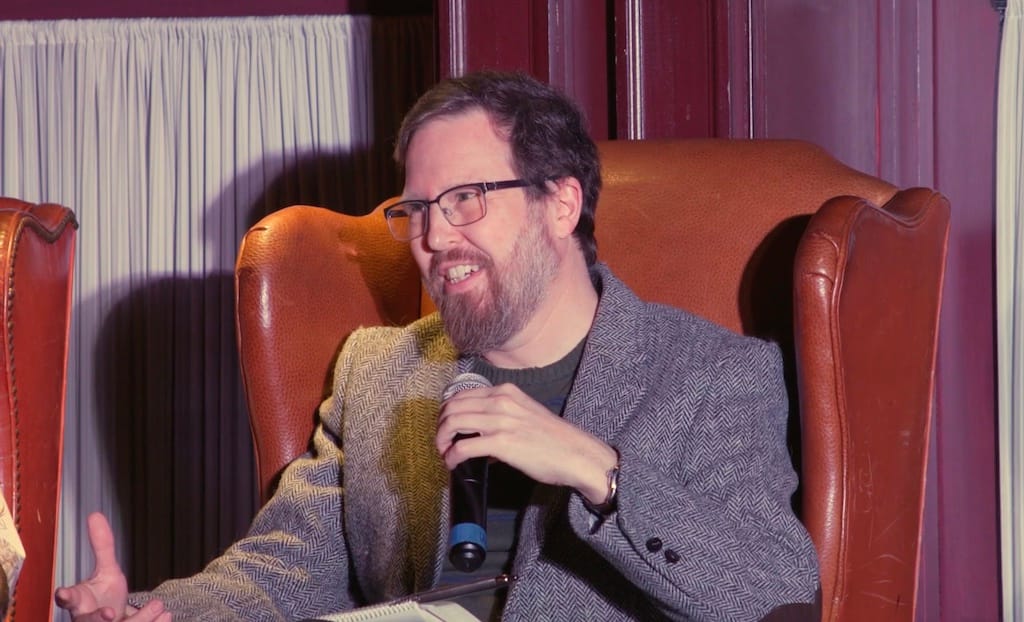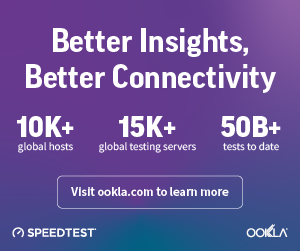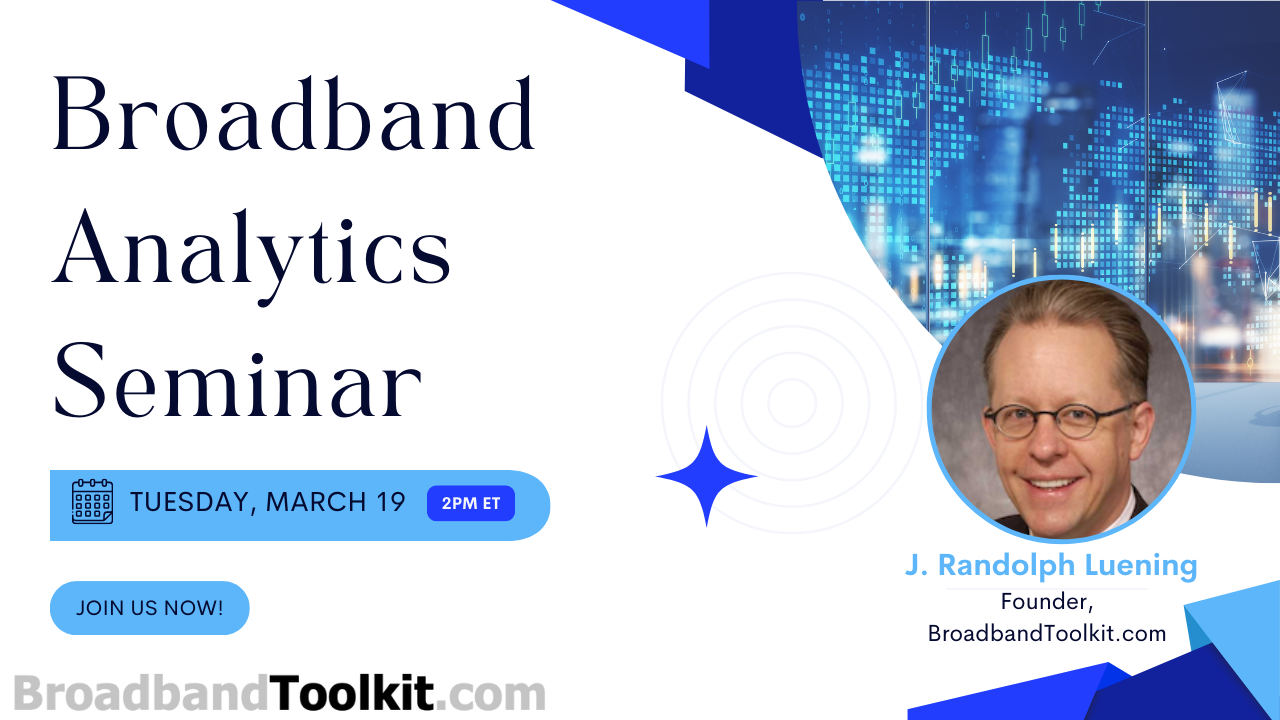From Labels to Legislation: Experts Address Barriers to Informed Choice
The assumption that consumers have a choice in selecting broadband providers is often far from the truth, said panelists.

WASHINGTON, March 14, 2024 – Despite the introduction of consumer broadband labels intended to facilitate comparison shopping for broadband services, experts and industry insiders speaking at the Broadband Measurement Summit on March 7 underscored the ongoing challenge consumers face in making informed decisions about broadband services.
The assumption underlying the Federal Communications Commission’s consumer broadband labels—that consumers have a choice in selecting broadband providers—is often far from the truth, said panelists.

A survey of 33,000 Consumer Reports’ members found that more than one in five, or 22 percent, were unaware of any internet service provider options other than their current provider. Another 30 percent said they had just one other ISP to choose from other than their current provider.
The complexity of broadband pricing further compounds the issue.
The aforementioned study involved gathering 55,000 internet bills submitted by individuals. However, more than 30,000 of these bills had to be discarded due to the inability to decipher the actual cost of internet access reflected in them, said Kristen Purcell, senior vice president of SSRS. Purcell was chief of staff at Consumer Reports at the time the study was completed.
There was such a lack of standardization among billing that it is currently impossible for consumers to engage in meaningful comparison shopping, said Purcell.
Consumer Reports' research indicates a widespread lack of understanding among consumers regarding the nature of their payments. "While I believe the labels may offer some assistance in addressing this issue, I recognize that there's still a considerable journey ahead," Purcell added.
Even as an expert, “it’s really hard to tell what is going on half the time” when deciphering FCC datasets, remarked Sascha Meinrath, Palmer Chair in Telecommunications at Penn State University, co-founder of M-Lab, and director of X-Lab.
Data and methodology are often unclear
The data often contains puzzling artifacts, and the methodology behind its derivation is unclear. This is symptomatic of a broader policy failure, Meinrath added.
The experts advocated for the systematic collection of broadband pricing data, acknowledging the considerable confusion it can entail.
Meinrath noted that a study he led on broadband pricing revealed that 20 to 30 percent of the total cost of services studied consisted of extraneous fees, “some of which were entirely fabricated by the ISPs,” he said.

“Prices are complicated. Look at your own bill and try to figure out what you’re paying for broadband. It's not always clear,” added Scott Wallsten, executive director of the Technology Policy Institute.
Regarding the variance in pricing that can arise within neighborhoods and even streets for identical internet service provided by the same ISP, Meinrath remarked in his studies he sometimes encounters situations where there is a 40 percent difference in pricing.
“Same neighborhoods, same service providers, same service," said Meinrath. "What we are seeing is pricing discrimination, based upon business practices that are never disclosed or understood by the FCC."
“Even though there is overwhelming evidence that this transpires, there is a profound reluctance amongst Democratic and Republican FCC commissioners to even investigate this practice,” said Meinrath.
In response to an inquiry by moderator Tyler Cooper, editor-in-chief of BroadbandNow, about how the United States’ approach to broadband pricing regulation differs from other developed nations, Meinrath expressed dissatisfaction, stating, “Our pricing is egregiously high compared to other industrialized countries. It’s only when you look internationally do you realize how piss poor America has done.”
Meinrath criticized the lack of competitiveness in the U.S. market, contrasting it with other nations where, he says, either meaningful competition or robust government regulation leads to lower prices.
Meinrath pointed out the discrepancy in pricing data aggregation between countries, highlighting that pricing in many countries is significantly lower than in the U.S. Wallsten added that pricing data from other countries tends to be more aggregated.
Meinrath concluded by arguing that the U.S. market's failure to deliver competitive pricing and quality services suggests a need for stronger government oversight and accountability.
“We are paying much more than we should for these services,” said Meinrath, emphasizing that Americans also receive “slower speeds than a growing list of other countries.”
“When we look at pricing across the U.S. we're only barely able to scratch the surface on what’s happening here,” said Meinrath. His team conducted a price elasticity study in rural Pennsylvania, which revealed that beyond the $60 threshold, adoption of internet service plans flatline, because no one wants or can afford to adopt internet service at that price point.
Average price of connectivity in America is more than $80/month
With the average price of connectivity in America hovering around $80 to $85, this data sheds light on why the country struggles to surpass the 80 percent broadband adoption mark.
Wallsten shed light on additional barriers to broadband adoption, citing findings from the FCC's 2014 urban rate survey, which analyzed thousands of weighted plans.
During this time, the FCC conducted experiments aimed at incentivizing low-income individuals to access the internet, but their primary discovery was the difficulty in attracting participants even when the service was offered at no cost.
This suggested that factors beyond price sensitivity were hindering adoption, yet subsequent follow-up on these findings never occurred.
“We don’t really know enough about this,” said Wallsten, adding “We really need to know more if we’re going to do a better job getting low-income people online."
The effectiveness of the Affordable Connectivity Program also faced scrutiny, as Wallsten pointed out that some evidence suggests the program's impact in encouraging sign-ups is minimal.
Wallsten pointed to data from the American Community Survey showing a notable uptick in adoption, especially among residents in 2020. However, following the program's implementation, Wallsten said the growth trajectory remained consistent with pre-ACP levels, indicating limited impact.
“CEOs [of ISPs] have generally said that 10 to 15 percent of ACP subscribers are new to them. A survey from New Street Research found that only 1 percent were new,” said Wallsten. This evidence “differs from what the FCC survey revealed: that 30 percent of ACP participants never had broadband before.”

“The program’s success is not totally clear,” Wallsten asserted.
“The ACP to me is hemorrhaging money,” said Meinrath. “The program was a great triage, but it's a terrible long-term solution.”
“As soon as we remove the ACP we’re just right back to where we were before,” he added.
“Why can't we discuss rate regulation,” questioned Meinrath. “We can’t even can’t even broach the topic of systematically collecting rate data.”
"How can we determine the price of broadband if we don't gather this information?” he asked. “We're lagging so far behind."













